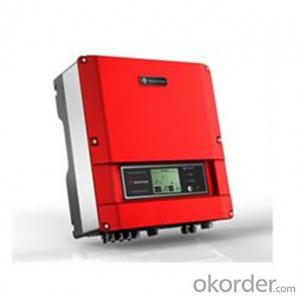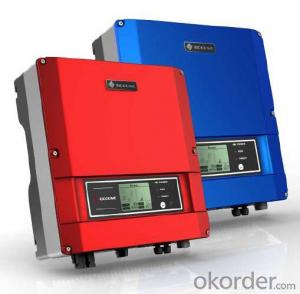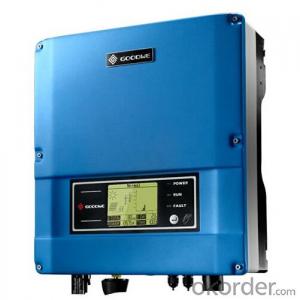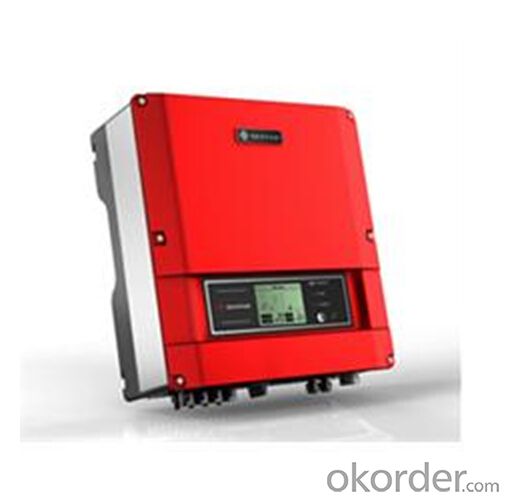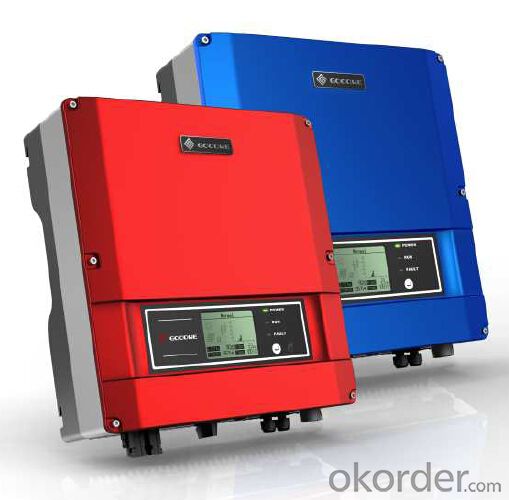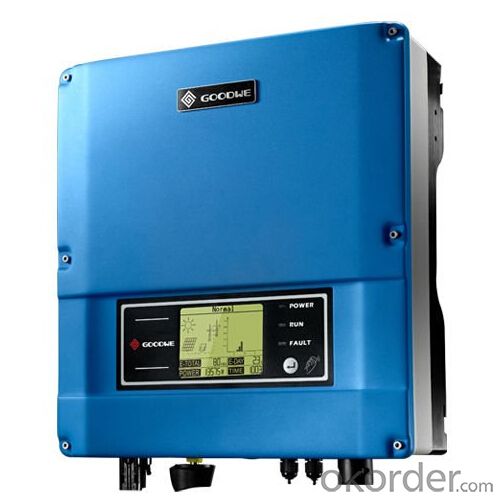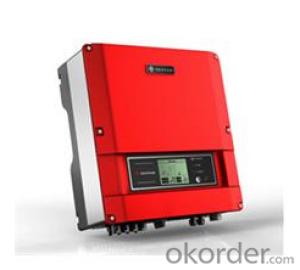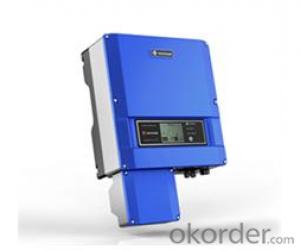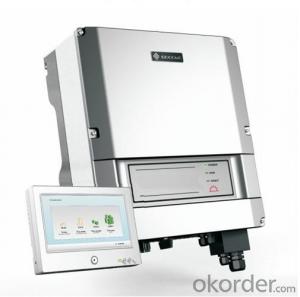Direct Solar Inverter GW4600-DS
OKorder Service Pledge
OKorder Financial Service
You Might Also Like
The DS series has created a new standard for inverter technology with more advanced reactive compensation technology and dual MPP trackers. The new series has a wide range of domestic applications.
Aside from being compatible with most solar panel brands, it also meets the demands of easy installation and simple operation for indoor and outdoor use. Despite its ultra light-weight structure, it meets the IP65 protective class.
Our unique dual MPP trackers and low THDi make DS series the best choice for users to build up perfect photovoltaic systems.
Datasheet
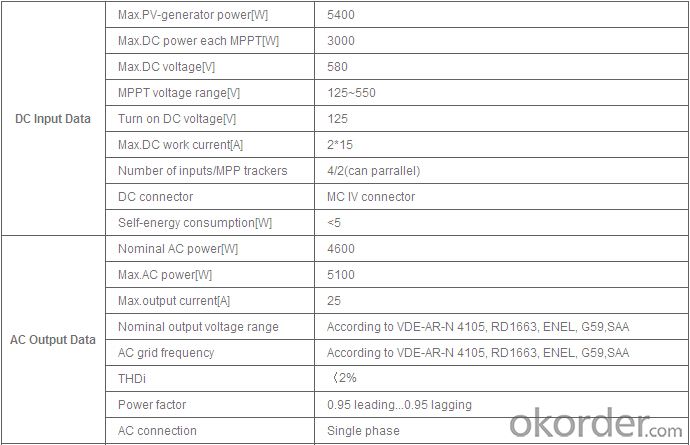
- Q: How does a solar inverter affect the overall system cost?
- A solar inverter can increase the overall system cost as it is a crucial component responsible for converting the DC electricity generated by solar panels into AC electricity for use in homes and businesses. The efficiency, capacity, and quality of the inverter can influence the system's performance and reliability. Higher-quality inverters with advanced features tend to be more expensive, but they can maximize energy production and improve system durability, potentially offsetting the initial cost through increased energy savings over time.
- Q: What is the role of anti-islanding protection in a solar inverter?
- The role of anti-islanding protection in a solar inverter is to ensure the safety of electrical grid workers by preventing the solar inverter from energizing the grid during a power outage. It is designed to detect grid failures and immediately disconnect the solar system from the grid, avoiding a potentially dangerous situation known as islanding. This protection feature helps maintain the stability and integrity of the electrical grid and protects both the grid workers and the solar system itself.
- Q: How does a solar inverter handle voltage fluctuations from the solar panels?
- A solar inverter handles voltage fluctuations from the solar panels by continuously monitoring the incoming voltage and adjusting its own output voltage accordingly. It employs a control mechanism that stabilizes the voltage to ensure compatibility with the utility grid or the connected appliances. This enables the solar inverter to efficiently convert the variable DC voltage from the solar panels into a stable AC voltage, maintaining a consistent and reliable power supply.
- Q: How does a grid-tied solar inverter work?
- A grid-tied solar inverter works by converting the direct current (DC) electricity generated by the solar panels into alternating current (AC) electricity that can be used to power household appliances and be fed back into the electrical grid. It synchronizes the frequency and voltage of the solar-generated AC electricity with that of the grid, allowing seamless integration and transfer of power. This inverter also ensures safety by monitoring the grid connection and automatically disconnecting the solar system from the grid during power outages or maintenance work. Overall, it enables efficient utilization of solar energy and allows homeowners to reduce their reliance on fossil fuels while potentially earning credits for excess electricity generated.
- Q: What is the efficiency rating of a solar inverter?
- The efficiency rating of a solar inverter refers to the percentage of solar energy that is converted into usable electricity. It is a measure of how effectively the inverter can convert the direct current (DC) output from the solar panels into alternating current (AC) electricity that can be used to power household appliances or be fed back into the grid. The higher the efficiency rating, the more efficient the inverter is at converting solar energy into electricity.
- Q: What is the maximum power capacity that a solar inverter can handle?
- The maximum power capacity that a solar inverter can handle varies depending on the specific model and brand. However, modern solar inverters can typically handle power capacities ranging from a few hundred watts to several megawatts.
- Q: How does a microinverter differ from a string inverter?
- A microinverter differs from a string inverter in that it is a small, individual inverter attached to each solar panel, converting the DC power generated by the panel into AC power. On the other hand, a string inverter is a larger central inverter that is connected to multiple solar panels in a string, converting the combined DC power into AC power. The main advantage of a microinverter is that it allows for maximum power point tracking and independent operation of each panel, increasing the overall efficiency and output of the solar system. Additionally, microinverters provide monitoring capabilities at the panel level, making it easier to identify and address any issues or malfunctions.
- Q: What is the role of a solar inverter in reactive power compensation during grid disturbances?
- The role of a solar inverter in reactive power compensation during grid disturbances is to regulate and stabilize the flow of reactive power between the solar PV system and the grid. During grid disturbances, such as voltage fluctuations or power factor variations, the solar inverter can actively inject or absorb reactive power to maintain the voltage and power factor within acceptable limits. This helps in improving the overall stability and reliability of the grid system, ensuring efficient power transfer, and minimizing any adverse effects on the grid and connected electrical devices.
- Q: Can a solar inverter be used in remote areas without access to the grid?
- Yes, a solar inverter can be used in remote areas without access to the grid. Solar inverters are designed to convert the direct current (DC) electricity generated by solar panels into alternating current (AC) electricity that can be used to power electrical devices. In remote areas, solar inverters can be used to harness the energy from the sun and provide a reliable and sustainable source of electricity, without the need for a connection to the grid.
- Q: How do you calculate the maximum power point voltage for a solar inverter?
- To calculate the maximum power point voltage for a solar inverter, you need to determine the voltage at which the solar panels produce the maximum power output. This can be done by following the voltage-current (V-I) curve of the solar panels. By measuring the voltage and current at different points on the curve, you can identify the point where the product of voltage and current is the highest, indicating the maximum power point voltage.
Send your message to us
Direct Solar Inverter GW4600-DS
OKorder Service Pledge
OKorder Financial Service
Similar products
Hot products
Hot Searches
Related keywords
